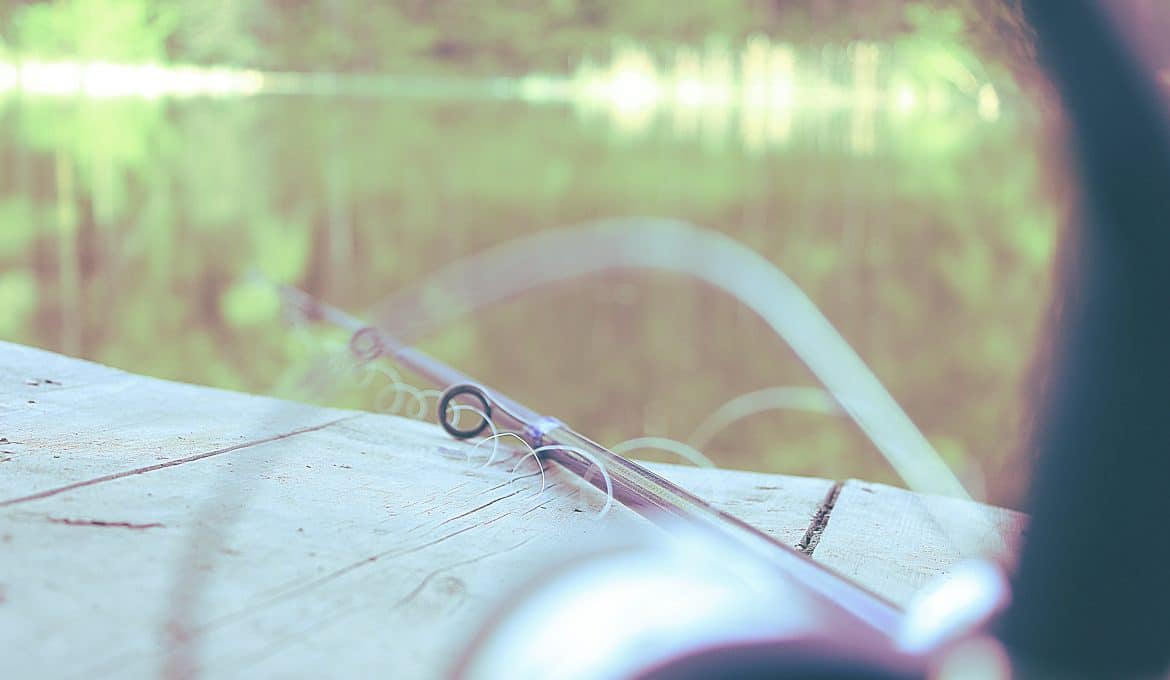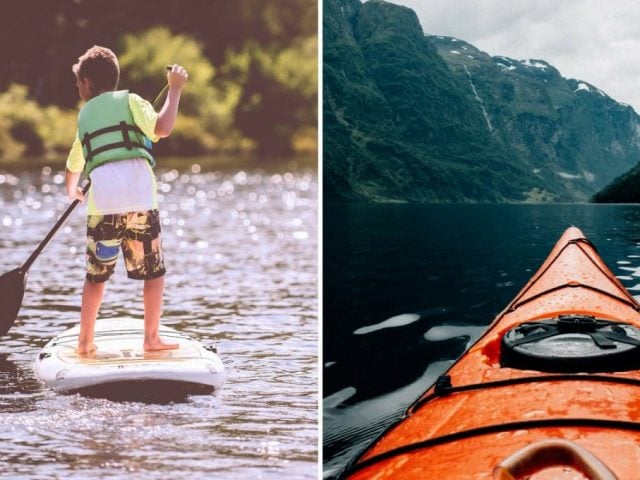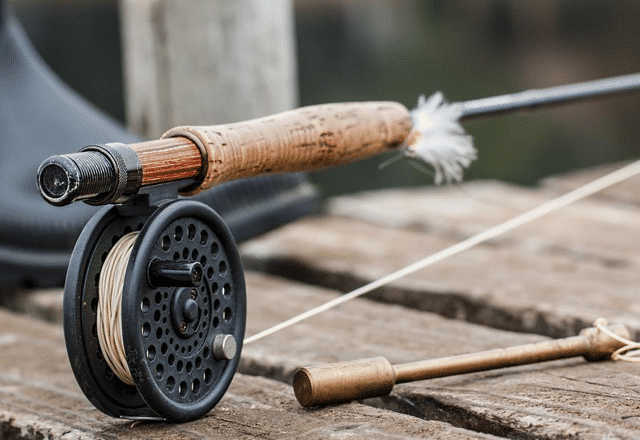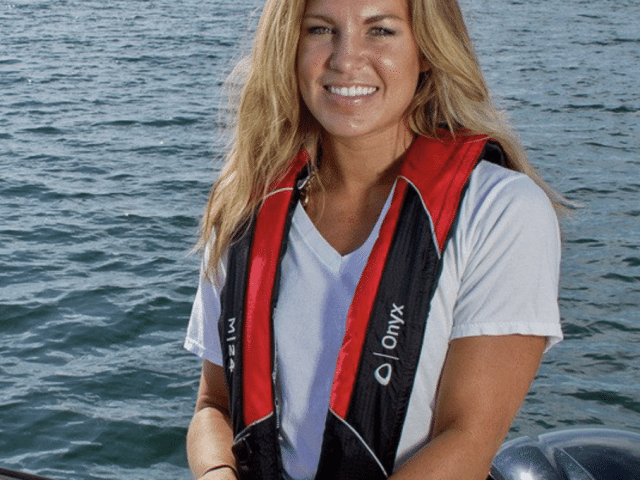In my opinion, Walleye fall into that category of the fish everyone wants more of. They are kind of like a Muskie’s little brother in terms of desirability and difficulty. Part of what makes them so enticing is the challenge of catching them as well as how delicious they are to eat.
Walleye fishing is a big topic in the Spring, and I want to help you catch more Walleye this year by also helping myself with a little extra research so I can do the same. In this article, we’re giving you the complete rundown on everything you need to know about how to catch more Walleye in 2019.
Understanding the Species
 When it comes to catching any fish, you need to understand how they behave. Each fish is different, and you need to go into the game with a specific strategy if you want to catch anything.
When it comes to catching any fish, you need to understand how they behave. Each fish is different, and you need to go into the game with a specific strategy if you want to catch anything.
Walleye are schooling fish so when you find one you can almost bet that you found an entire congregation. If you hook and lose one continue fishing that area for a while and you might get lucky.
These fish are also susceptible to light so you’ll have a hard time ever finding them in broad daylight. It’s best to fish Walleye during dawn and dusk in shady areas. You also have to be careful how you cast a shadow on the water. Their eyes are so sensitive that they will react to any dramatic change of light in the water. If you are fishing the shoreline, it’s best to stand back a few feet to prevent any shadows and if you are on a boat, try sitting down while casting.
The last and most important thing to understand about Walleye is how they relate to structure. Structure refers to an ideal area in a body of water where fish like to congregate; for Walleye, this is usually abnormalities in the water body floor such as a sudden change in depth. Walleye will also swim to an unusual rock pile beneath the seat of a rocky dam. These are the types of things you need to pay attention to.
Where to Fish for Walleye
Now let’s talk about the three main areas you will fish and how to find Walleye in all three. Let’s face it, very rarely do we stumble upon the perfect situation and condition for catching anything. We always have to improvise and figure something out right?
Based on experience, networking, and research; here’s my take on how to fish any condition for Walleye.
Heavily Vegetated Water
We have all been in a situation where we plan a trip to a nearby pond or lake, and it’s loaded with weeds. The motors churning and we’re making our way around the lake but visibility is next to none, and we’re always afraid of getting stuck at some point. How do we fish for Walleye in this situation?
This is actually one of the best conditions for catching Walleye because this fish loves the coverage. They do not like being in the open water, but heavy weeds allow them to feel safe even when they are in the open water. You want to find the weediest section of the lake and cast there. If it’s early in the morning or late in the evening you want to fish shallow sections along the shore and during midday find weedy areas in the deeper water.
Open Water
Let’s say you’re in the worst possible situation and you have no choice but to fish deep, wide open water with no cover or structure of any kind. Maybe the pond you’re fishing is incredibly crowded with boats, and you don’t want to waste time waiting for someone to move.
If it’s the middle of the day, this could be a blessing. Fish 10-20 feet deep using baitfish and you might be able to find some feeding Walleye who are looking for exactly what you’re offering.
Rivers
 A lot of people think you can’t catch sizable Walleye in a shallow river and they would be correct, sometimes. I talked with a 40-year fishing veteran Chester Strite, and he gave me a ton of useful information for catching Walleye in the river. He said “ The reason so many folks can’t catch Walleye in the rivers is that they are fishing in the current like they’re trying to catch Trout. You have to fish any Stillwater you can and when you do, look out.”
A lot of people think you can’t catch sizable Walleye in a shallow river and they would be correct, sometimes. I talked with a 40-year fishing veteran Chester Strite, and he gave me a ton of useful information for catching Walleye in the river. He said “ The reason so many folks can’t catch Walleye in the rivers is that they are fishing in the current like they’re trying to catch Trout. You have to fish any Stillwater you can and when you do, look out.”
What he said makes a lot of sense. Walleye are schooling fish, and they prefer coverage and still water. This means if you can fish the eddies and small inlets throughout the rivers its bound to be a buffet if you can find a school.
Best Live Bait for Walleye
Walleye are a picky catch, and they won’t bite just anything because they don’t require a lot of food to survive. I recommend that everyone should use live bait to catch Walleye if you do not have experience. I can say, I have never caught a Walleye with anything other than live bait so take my word for it.
 Here are some of the best choices for live bait:
Here are some of the best choices for live bait:
Minnows – Minnows are always a safe bet, and you’ll have no reason to believe you made a bad choice with a shiner on the hook. Shiners are usually about four inches in length so you’ll be able to bring in both small and large Walleye.
Nightcrawlers – A good old faithful worm is always a reliable option, but you want to make sure you rig them properly. With a worm on the hook you’ll find yourself with more panfish than you can count taking up your entire day and leaving you with no Walleye, so make sure you get some sizable night-crawlers and rig them properly to disqualify the smaller fish.
Leeches – Leeches are highly underestimated bait for Walleye because a lot of people don’t know how to hook them properly, or they are scared. When you sink a hook into a leech, it immediately curls up and creates an unnatural appearance that turns the fish off. You need to hook the leech through its suction cup which allows it to continue to swim and look natural.
Best Lures for Walleye
Jigging is the most popular way of catching Walleye if you’re using lures. It’s essential to keep the tendencies of the fish in mind and understand how skeptical they are about your lures though.
If you’re jigging be sure to use a small head and hook with a three to four-inch grub for the best outlook. The only real advantage I see to fishing with a lure for Walleye is the economics of it. You’ll cover more water, and you’ll be able to reel and cast more without sacrificing your live bait, but overall fishing with minnows or leeches is the way to go.
Presenting Your Lure: The Best Strategies
 While jigging is thought to be the most popular way of catching Walleye, trolling is also a reliable option for when you feel you have a lead on a school of fish. If you are unfamiliar with the terms:
While jigging is thought to be the most popular way of catching Walleye, trolling is also a reliable option for when you feel you have a lead on a school of fish. If you are unfamiliar with the terms:
Jigging: Using a heavy head on the lure that creates a rapid movement of the lure in the water.
Trolling: Smooth horizontal movement throughout the water usually done by reeling or slowly moving the boat with the lure in the water.
These are two different styles of fishing, but they each have their purpose in catching Walleye. Jigging is a great way to gather attention, and I think it works best when fishing around structure or vegetation.
Trolling for Walleye works well when you’re fishing open water and trying to blend in with the baitfish strategy. Using a spoon and planer board allows you to suspend the lure at a chosen depth and run it through the water, but this requires you to have a lead on a specific area of water already.
Seasonal Considerations
There are so many steps you can take to locate fish in your local waters if you keep their habits in mind. Walleye spawn in rivers during the spring so at that time you will want to fish the river as we discussed above and you should have no problem catching Walleye.
When things get difficult is during the summer when all the fish migrate out to the lakes and spread about. During the summer is when structure comes into play and you need to look around for where the Walleye might hide out.
During the fall and cooler months, they start to school up again and generally move to points of the water where a river comes in or exits. They also like rocky areas along with dams so when the waters get colder, you want to look there.
A Few Tips From Some Veteran Anglers
- The first tip is one of mine, and it’s for you to be patient with Walleye. These fish are not ornery like Bass, so they do not strike a lure quite like some fish too; instead, they trail it for a while before biting. This means you need to work the bait slowly with plenty of stops along the way.
- Local Angler Chester Strite provided a tip here by saying “A big mistake a lot of people make with Walleye is they categorize them as a deep-water fish, but if you’re fishing early morning or right before dark, they’re all in the shallow water just barely deep enough for them to move around.”
- The last tip is from another fishing veteran; he says “Walleye love dirty water so if you can hit a small pond or lake right after a heavy rainstorm or a few days of regular rain you’ll have the best chances. Don’t be afraid to fish the bottom of a shallow pond from the shore.”
Spring has sprung, and many people are excited to get back on the water! I want you to head out this year knowing that Walleye are not a tricky species to catch, but you have to do a little brain-work if you’re going to find them.
Apply all the steps we covered above and utilize the little tricks as you can. You’ll have no problem bringing home some Walleye this year!





You mention to make sure you bait night crawlers properly but you do not describe the proper way to do this?